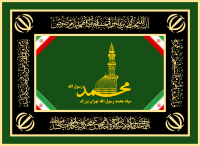27th_Muhammad_Rasulullah_Division
27th Mohammad Rasulullah Division
Former division of the Iranian IRGC
27th Mohammad Rasulullah Division (Persian: لشکر ۲۷ محمد رسولالله) was a division of the Islamic Revolutionary Guard Corps Ground Forces based in Tehran.[1]
This article needs additional citations for verification. (July 2016) |
It was established as the 27th Mohammad Rasulullah Brigade by Hossein Qajeyi, Ahmad Motevasselian and Mohammad Ebrahim Hemmat during the Iran–Iraq War, and was expanded into a division just before Operation Jerusalem.
Describing the IRGC units during the Iran-Iraq war, then-commander-in-chief of IRGC Mohsen Rezaei says:[2]
We had four divisions that, anywhere they went, no [Iraqi] military force was able to resist against them. Haj Hemmat and [his] 27th Mohammad Rasulullah Division, Hossein Kharrazi and [his] 14th Imam Hossein Division, Mehdi Bakeri and [his] 31st Ashura Division, Ahmad Kazemi and [his] 8th Najaf Division—which whenever they entered, it resulted in success without exception.
